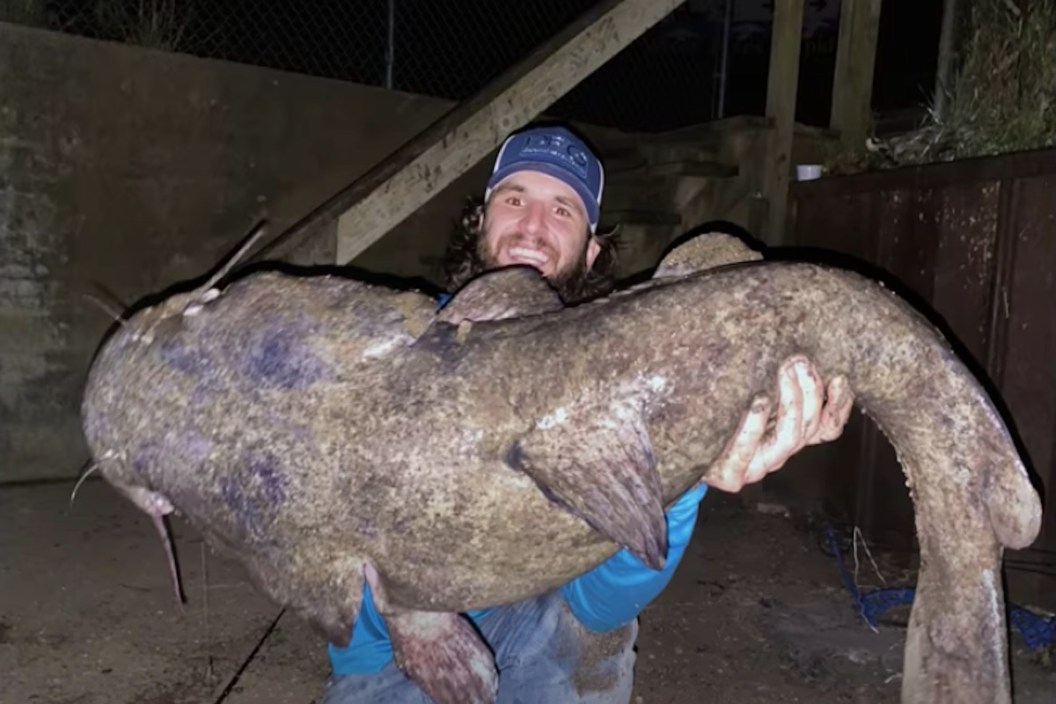Here are the three main kinds of catfish that we fish for across the nation.
Make no mistake, fishing for catfish is a time honored way of spending some great time angling. Whether you are fishing for a monster or fishing for a meal, the three kinds of catfish are out there waiting for you in virtually every state of the union.
They inhabit lakes, rivers, reservoirs, impoundments, and even ponds, but mostly the dreams of catfishermen around the nation. Understanding the different catfish species and their different behaviors is essential to being a successful catfish angler or going home empty handed.
Catfishing is not only a pastime in the U.S., but a passion for a worldwide crowd that loves to chase these tasty fish and make meals out of them. Although not many want to eat a 100-pound fish (not that you can't), catching one is the lifetime achievement of many that sink a stinkbait or live bluegill into the depths of the nearest waterbody.
Channel Catfish
The channel cat or Ictalurus Punctatus is most likely the best eating of the three main types, and the species of catfish that is the most common throughout the country. Channel catfish live in seemingly every lake, river, and reservoir that you may come across, making them second in popularity only to the largemouth bass in total participation.
Channel cats usually spawn in late spring or early summer when water temperatures reach about 75 degrees, preferring to use more secluded areas like undercut banks, rock piles, or submerged logs for their nest.
Juveniles feed primarily on aquatic insects, fish, and crustaceans to get them through their first year. They have a very forked tail fin and are most often olive-brown to a slate color as they mature.
Channel catfish are caught with a wide variety of prepared baits, natural baits, and are even caught on artificial lures. Offerings like worms, baitfish, crawfish, or other live baits are widely used, but probably the most popular are the prepared catfish baits like punch baits, dip baits, and soap baits, which are all more commonly known as stinkbaits.
Channel cats can grow to be 25 to 30 inches in length and weight over 50 pounds, but are more commonly caught in the 15- to 20-inch range, which happen to be the best eating size.
Blue Catfish
The Ictalurus Furcatus or blue catfish is the largest growing of three and one of sportfishing's most sought after prizes. Blue catfish can routinely reach weights of 20 to 30 pounds and occasionally reach sizes in excess of 100 pounds. It is said that fish exceeding 200 pounds were taken from the Mississippi River during the late 1800s, but that may be an old wive's tale.
Blue catfish are primarily large-river fish, living mainly in the channels and tributaries of major river systems. They travel upriver in the warmth of summer in search of cooler water and downstream in the winter in order to find warmer water temperatures.
Blue cats are native to the most famous large river systems such as the Ohio River, Mississippi River, and Missouri River basins from the Midwest all the way to Texas and even across the border in Mexico. They appear a slate blue color on their upper sides and back, but have a white belly.
Juveniles will feed on aquatic insects and small fish, but as they grow and gain in strength they will eat crayfish, mussels, and larger fish. Blues can be caught on artificials, but are most often targeted with live or fresh cut bait.
Blue cats are one of the greatest reasons why anglers line up to wade, boat, or shore fish at the tailraces of dams. Blues can also live and be targeted in water that is quite deep. Hooking a big blue catfish can be the angling experience of a lifetime since they can and will fight like the tanks that they are, going on run after run and stripping line in a determined battle of angler versus fish. Use heavy duty tackle and line when you try to catch blue catfish.
Flathead Catfish
Yellow catfish, Appaloosa Catfish, and Shoveled catfish are all used to describe the Pylodictis Olivaris, or Flathead catfish. Also capable of growing well over 100 pounds, the flathead cat as an adult is the only one of the three that feeds almost exclusively on live prey, although their young start out early by eating such forage as crayfish, worms, invertebrates, and aquatic insects.
The spawning season for flatheads runs a little later, generally from May through August when water temperatures rise between 75 to 80 degrees. According to the USDA, "One or both parents excavate the nest that is usually made in a natural cavity or near a large submerged object. Females lay a golden-yellow mass of up to 100,000 eggs."
Flatheads share nearly the same waters as the blue in the form of larger rivers such as the Mississippi, Missouri, and Ohio Rivers. They are native to New Mexico east of the Continental Divide and have been introduced widely in the southwest in Arizona.
Flatheads prefer to move into shallower water at night to feed which is when many fishermen target them, but are more difficult to locate due their propensity to be solitary bottom feeders.
Bullhead Catfish
There is the black bullhead, brown bullhead, and the yellow bullhead, but each of these cousins are most closely related to the channel catfish, although they have a flat tailfin, not forked. Bullheads are bottom feeders that eat just about anything including crayfish, freshwater mussels, snails, insects, and fish eggs.
Bullheads live in lakes, rivers, and streams, but prefer slower, quieter waters with softer bottoms. They can easily tolerate turbid, muddy water that many fish cannot stand, and are able to survive in water with low oxygen levels.
Bullheads have a single, sharp spine in their dorsal and pectoral fins that are mistakingly associated with being a stinger.
Bullheads begin to spawn as the summer starts and waters warm and can lay around 4,000 to 5,000 eggs. The male generally guards the nest until the young can fend for themselves, scavenging the softer bottom areas for whatever their barbels can find for them. Bullheads have no scales, but they do have about 100,000 taste receptors all over their bodies which gather scent and taste as they cruise looking for food.
Bullheads grow about 10 to 15 inches in length and average around a pound in weight, but some grow much bigger. Many state records show fish can be up to three pounds or more.
Wrapping Up
There are thousands of catfish species around the world, but the Ictaluridae family lives only in North America. As a freshwater game fish, cats are one of the most popular species for anglers everywhere due to the fun of catching them and the fact that they are great eating.
They are sometimes called mud cats, shovelheads, horned pout, and bullheads, but they are all a fish that we love to catch. Catfish have started a cottage industry in angling that can't be denied, and one that has grown into a force to be reckoned with across the nation.
Cats are a great starter fish for kids and other anglers who may just be beginning their angling adventures, mainly because they are fairly common and easy to catch. For many, it is a simple matter of setting up your favorite chair, getting your rig ready, throwing out some bait, and relaxing.
For others, it is a serious game of "cat and mouse" trying to find fish the size of your truck's tool box, entice them into a strike, and then hang on!
As much as any of the fish we know and love that exist in North American waters, the catfish family is one of our favorites.
Looking for a little more or even hot lunch for your hunting blind? Follow my webpage, or on Facebook and YouTube.
Products featured on Wide Open Spaces are independently selected by our editors. However, when you buy something through our links, we may earn a commission.
NEXT: FISHING FOR FLATHEAD CATFISH: TECHNIQUE, LOCATIONS, GEAR, AND MORE





